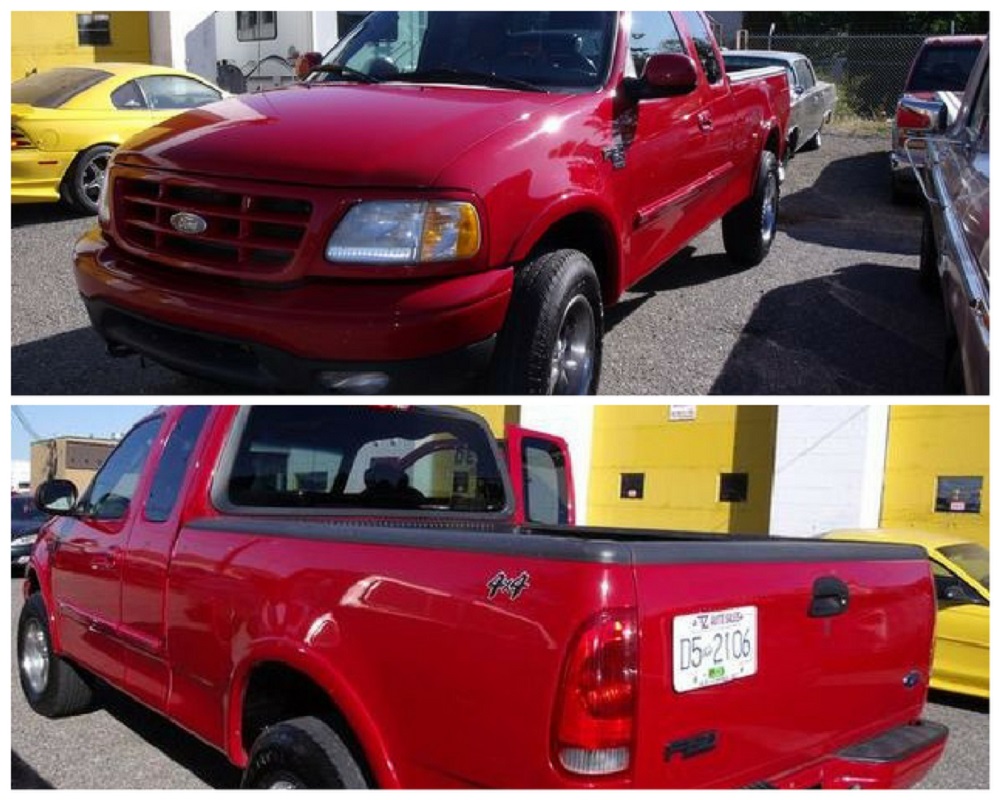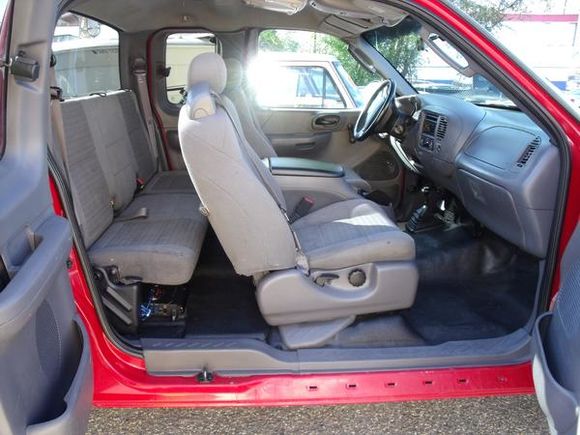D.I.Y.: How to Troubleshoot & Fix an F-150 4X4 (1997-2003)

Today, we’re shining our spotlight on FTE member RevyTrucks’ invaluable tips on how to keep your Ford truck in tip-top shape.
Check out RevyTrucks‘post below!
RevyTrucks writes: I am posting this because it took me AGES to find this information and piece it together from many sources all over the internet. From a girl who knew NOTHING about these systems a few weeks ago, here is a quick and easy guide to troubleshooting your 4X4 problems — mostly for Manual shift on the floor (MSOF) systems or what goes on mechanically after you press the button on the electronic systems. All you need for these tests is a friend, and a socket set.
The 4X4 works with two systems – the shifter on the floor manually engages the transfer case. It also causes a relay to ground one of two solenoids that cause vacuum lines to activate an actuator which engages the front differential. If either of these do not work, your 4X4 won’t work.
In my case, and most that I have read, the 4X4 simply does not engage and the dash light either always goes on or does not go on.

1. Rule out transfer case problems: This is easy – get someone to put your truck in 4X4 and roll forward while you peek underneath from the side. If the front drive shaft is turning, your transfer case is fine and engaged.
2. Check the fuse! #23 by the hood lever and parking brake under the front dash.
3. Check the functioning of the solenoids: this is easy as well. The solenoids are located in the passenger side of the engine compartment directly behind the battery on the firewall.
From what I have read, a good indication of a problem here is the absence of the dash light. You can get fancy and test them electrically (they should each have 12V power all of the time) but the easiest way is to put your fingers on the plastic caps and feel and listen for a click as someone shifts your truck in and out of 4X4. If they click – they are working! If not, this is likely your problem. It is a common problem apparently for these years of trucks to get water in the solenoids which then freezes and cracks them.
Here is some good info and part numbers if this is your problem.
“The right solenoid (E8AE-9H465-AA) controls the vacuum to the return side of axle engagement diaphram. The left solenoid (E8AE-9H465-BA) controls the vacuum to the activation side of the axle engagement diaphram. Ford has been having chronic problems with water entry into these solenoids, corroding them from the inside and seizing them,as you’ve seen!
They’ve been redesigned and those old part numbers (E8AE-9H465-AA/BA) have been superseded.
The latest designs are listed as:
Disengage solenoid 6L3Z-9H465-A (identified by electrical connector rib at 9:00 position)
Engage solenoid 6L3Z-9H465-B (connector rib at 6:00 position).
3. Check your vacuum lines: This is a little tricky to do becuase they wind their way from the solenoids all the way to the 4WD actuator on the front axle. One hose leaves from each solenoid at the front (close side to the battery) and one is pink and the other is blue(greenish if older). Follow the lines down as best as you can, checking for spots with wear or rubbing. Also make note if they seem old and brittle as there could be a crack you don’t see. Mine were rubbing a bit on the passengers side wheel well so check there. Now crawl under the truck and in the centre on the axle is the actuator diaphragm. It is under a cover that is easily removed with a socket and the two hoses are attached to it. Pull the hoses off and while the truck is on, and someone shifts it in and out, put a finger over the end of each hose. The vacuum should alternate hoses when shifted and the pressure should be equal although it is surprisingly not a strong pull. If your hoses look good and suck like I said, they should be all good (this also confirms that your solenoids, and vacuum reservoir are working as well.)
4. Vacuum actuator function: This is easy to check. Crawl under your truck, take off the cover for the actuator and watch as your friend shifts from 4X4 and back. When the truck is shifted to 4X4, the shaft should slide into the diaphragm, moving the lever it is connected to to the passenger side direction. When shifted back to 2 wheel, the shaft should slide out of the diaphragm towards the drivers side. The movement is about 2 inches total and happens smoothly.




